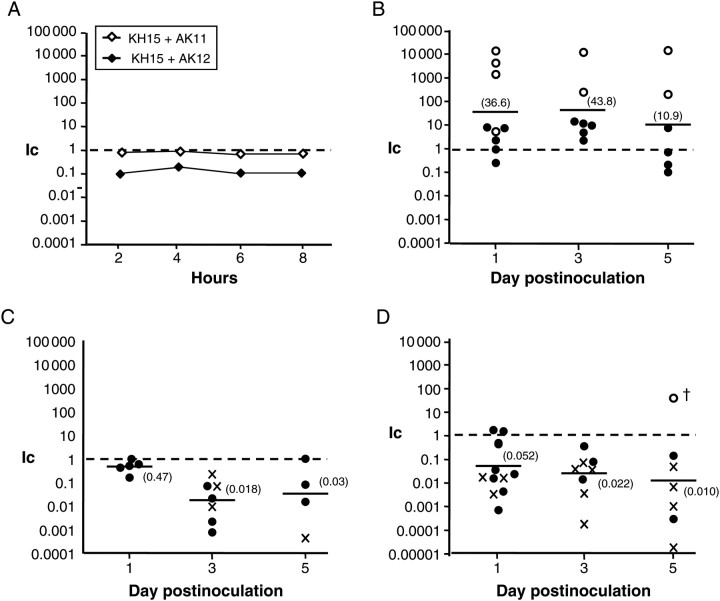Figure 3.
The mutant gyrA91/95 allele increases the in vivo fitness of an mtr mutant. In vitro and in vivo competition experiments were performed between strains KH15, AK11, and AK12 and competitive index (Ic) values were calculated as described in the legend for Figure 2. A, The Ic values for KH15 vs AK11 or AK12 when cocultured in GC broth. B–D, results from competitive murine infections with KH15 vs AK11(B), KH15 vs AK12 (C), and AK11 vs AK12 (D). AK11 bacteria showed a marked in vivo fitness advantage relative to the mtr mutant parent strain KH15 early in infection. In contrast, AK12 was attenuated in vivo. This result is consistent with the increased fitness of AK11 over AK12 shown in D. In B, open circles correspond to mice from which only AK11 bacteria were recovered. In C, cross hatches refer to mice from which only KH15 bacteria were recovered. In D, cross hatches correspond to mice from which only AK11 colony-forming units were recovered. The open circle on day 5 in D corresponds to the mouse from which equal numbers of bacteria were recovered on GC media with streptomycin (Sm) and GC media with Sm and 2.0 ug/mL ciprofloxacin, as occurs with strain AK12. A ciprofloxacin-resistant isolate from this mouse was colony purified and later characterized as mutant AK13. All results are combined data from 2 independent experiments.

